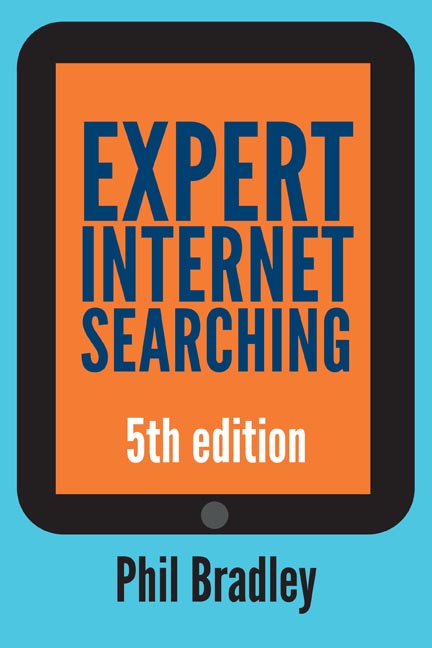Book contents
- Frontmatter
- Contents
- List of figures
- Preface
- Acknowledgements
- 1 An introduction to the internet
- 2 An introduction to search engines
- 3 The world according to Google
- 4 Other free-text search engines
- 5 Directory, clustering and similarity search engines
- 6 Multi- and meta-search engines
- 7 Social media search engines
- 8 Visual and image search engines
- 9 People-based resources
- 10 News-based search engines
- 11 Multimedia search engines
- 12 Specialised search engines
- 13 Hints, tips and the future
- Index
9 - People-based resources
Published online by Cambridge University Press: 09 June 2018
- Frontmatter
- Contents
- List of figures
- Preface
- Acknowledgements
- 1 An introduction to the internet
- 2 An introduction to search engines
- 3 The world according to Google
- 4 Other free-text search engines
- 5 Directory, clustering and similarity search engines
- 6 Multi- and meta-search engines
- 7 Social media search engines
- 8 Visual and image search engines
- 9 People-based resources
- 10 News-based search engines
- 11 Multimedia search engines
- 12 Specialised search engines
- 13 Hints, tips and the future
- Index
Summary
Introduction
Whatever else the internet is or isn't about, people come pretty much at the top of the list. If we're not e-mailing them, we're searching for them, and if we're not doing that, we're talking with them on social media. In this chapter we'll be taking a look at finding people, and also using the tools and resources produced by people. In other chapters I have alluded to the importance of the individual, so let's really bring that point into the open right now. In ‘the old days’ we would run a search, find a website, visit it and get the information we required and then move on. Now of course those sites were run by people (often entire teams of web editors), but in the last few years we've seen a significant change in the way that we use the net. With the increase in social media and user-generated content the role of individual content creators becomes more important every day. For example, if I'm interested in what's being said at a conference that I am unable to attend, I'll go to Twitter, find an appropriate hashtag and then follow along with what is being said, thanks to the helpful tweets from attendees. I don't actually care that much if the tweeter comes from a university or a blue chip company, I'm interested in what they have to say and to report. It doesn't matter to me if the person reporting on a protest in a local city is young or old, black or white, Muslim or Christian, as long as I can trust the information that they are providing me with. Now of course, people do have their own agendas, biases and opinions and this is going to affect what and how they report information, so I need to ensure that I can trust the person who is reporting on the content.
- Type
- Chapter
- Information
- Expert Internet Searching , pp. 145 - 156Publisher: FacetPrint publication year: 2017



